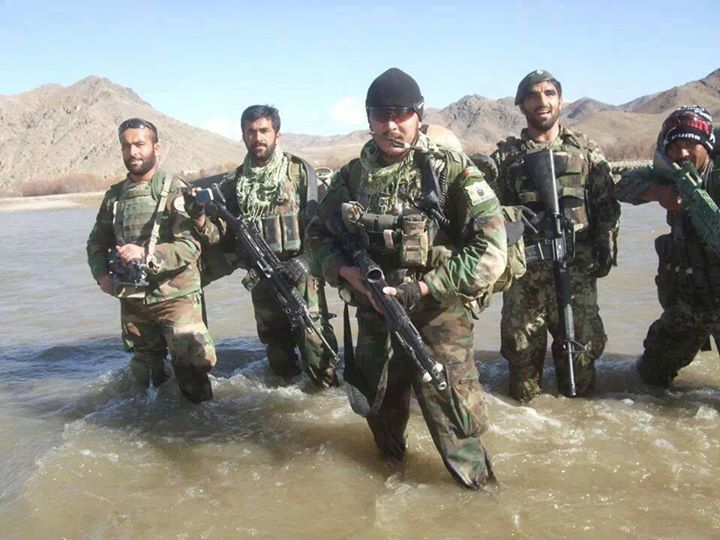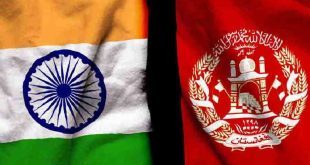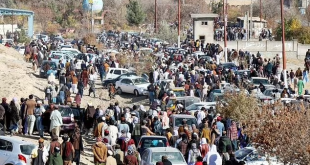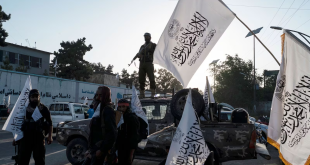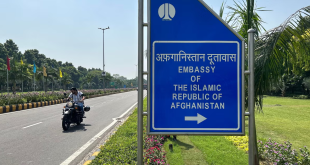AT-KABUL: The Chairman of the Joint Chiefs of Staff Marine Corps Gen. Joseph F. Dunford has said that he overall was pleased with what he saw and believes integration of lessons learned from operations last year will make the Afghan army and police more effective forces going forward.
The US Department of Defense said that Gen. Dunford took the advantage to assess the capabilities of the Afghan forces during his visit to Afghanistan as the change of the command was the highlight of his visit to the country. He said that Afghan security forces went through tough tests in 2015 where enemy forces tested them in many areas and many ways.
Last year, the Afghans assumed control of their security with very little coalition back-up, he said. Afghan forces need more capabilities in some complex areas — ministerial capacity, aviation, logistics, special operations and the intelligence enterprise, the chairman noted.
Delaying some of these capabilities was the fact that Afghan security forces had to provide protection for two elections. “It’s fair to say the political transition took longer,” Dunford said. “2015 really was the first summer without significant coalition capabilities,” he said. “The Afghan forces were in the fight on their own.”
Some people have characterized actions in Afghanistan over the past year as a stalemate, the chairman said. “I would say there were some successes, some setbacks, but overall the Afghan forces at least proved resilient, they stayed in the fight,” he said. “Now there are some lessons learned from 2015 that can be applied for 2016.”
Dunford said one area that will receive a lot more attention in 2016 is integrating aviation assets into the Afghan combined arms campaign. The Afghan air forces now have MD-530 helicopters and A-29 Super Tucano fixed-wing close air support aircraft. “We will see the difference,” he said. “Right now [we’re] working on getting all the spare parts we need, getting the maintenance, then doing some training that addresses the shortfalls.”
Afghan leaders recognize adjustments have to be made in the campaign plan this year. Dunford met with Afghan chief of defense Gen. Qadam Shah, Defense Minister Masoom Stanekzai and President Ashraf Ghani and, he said, all spoke of the things that will be done in 2016 to set the conditions for success in the current campaign plan.
And the Afghans will have assistance from the coalition, the chairman said. Afghan leaders are briefing their campaign plan to new Resolute Support Mission commander Army Gen. John W. Nicholson and he will see how coalition forces can configure their capabilities to help the Afghans this year, Dunford said.
“One of the things that helped the Taliban in 2015 was the uncertainty of the U.S. commitment in 2016,” he said. “That now has been addressed.”
President Barack Obama’s decision to keep 9,800 U.S. service members in Afghanistan through most of 2016 is a clear message to the Taliban and al-Qaida — and to the Islamic State of Iraq and the Levant, which is trying to build support in Afghanistan — that the coalition is standing with the Afghan people, the chairman said. “Taliban leaders told their followers that the United States would be gone, and now they know it is not true,” Dunford said.
The chairman also met with US troops in Jalalabad. He received briefings on the complexity of the battle space in the east, where intelligence officials spoke of infighting among the Taliban, al-Qaida and ISIL during 2015, noting that there was a lot of “red-on-red” actions there.
The US troops in Jalalabad are advising the 201st Corps, and they feel very good about their relationship with the Afghans and have noticed another level of maturity to the Afghan forces, Dunford said.
Overall, the chairman said, he’s pleased with the coalition relationship with the Afghan government.
Dunford said he was also quite pleased that Pakistan’s Army chief of staff, Gen. Raheel Sharif, attended the change of command ceremony in Kabul. The two men were able to catch up on a number of issues including increasing coordination along the Pakistan-Afghanistan border, and assessing the threats to the region. “Their sight picture is pretty close to ours,” he said.
 Afghanistan Times
Afghanistan Times
